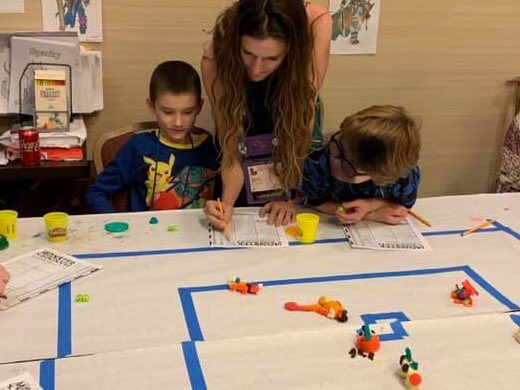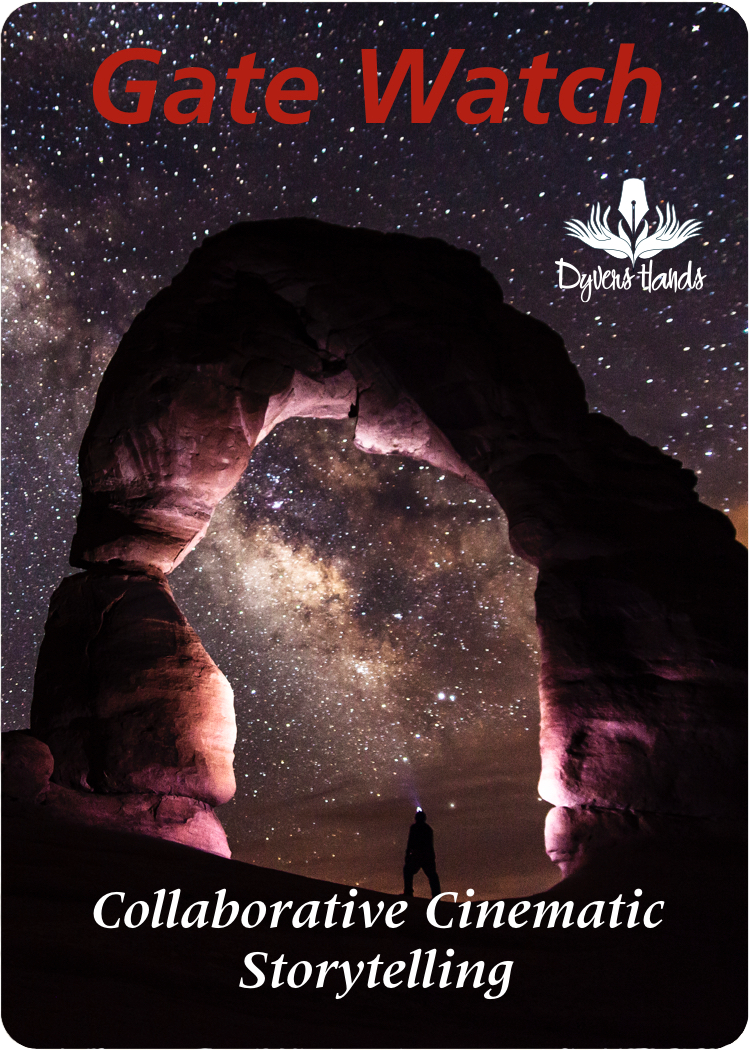The Power of Constraints

“The Power of Constraints: Embrace limitations and boundaries as a source of inspiration. Appreciating the obstacles helps you see more fully how to overcome or adapt to them. Accepting constraints, they can morph into useful forms that open up new possibilities, spurring creativity.” [^1]
I’d like to discuss some design choices in my Tableau Games system that set it apart from other storytelling games you may be familiar with.
One striking difference is the presentation of the entire game’s rules on poker-sized playing cards. This idea was inspired by a periodic challenge I set for myself as a designer, in which I picked a design constraint (usually length & size) to explore my creativity.

One of my early examples of this is my free Monster Smash game that I originally wrote in 1994, where Play-Doh creatures grow fangs, legs, wings, tentacles, poison stings & more, and players compete for the right to smash them. My goal was just to see how simple and elegant I could make a board game. All the rules, table of costs for the “monster parts,” a monster tracking sheet, and even the ruler needed for range attacks, all fit on a single sheet of paper. It was a huge success over the next few years at various Bay Area local game conventions and became so popular that in 2001 I wrote “The Next Page” on the back side of the page, offering some optional rules. Almost 30 years later, the game continues to be a convention favorite. I will walk in early in the morning and smell Play-Doh filling the halls, and hear both adults and kids yelling, “Smash! Smash! Smash!”. A few kids I played the game with in early have shared with me that they are now bringing their own children to conventions to play!

In 2019, I challenged myself to create a small, elegant RPG game. I discovered an interesting price break at 18 poker-sized cards (probably because that is the size of many sports trading card decks), so I decided to work within that constraint. This led to a successful Kickstarter campaign for my original Gate Watch game. Its rules fit on 6 cards, with the remaining cards dedicated to a random card drama mechanic and storytelling prompts. Since card backs are just wasted space, I put 18 different inspirational images on the backs of the cards.
Initially, my plan for a 2020 sequel, Twilight Road , was to create another 18-card game. If Gate Watch was about living on the borders and edges, Twilight Road would be about the roads that pass through them. However, the lockdown halted not only my gameplay but also my playtesting efforts. The constraints of lockdown and revisiting my game designs over and over led me to realize that the two games could be intertwined. After discussions with my colleagues Aaron Reed and Shannon Appelcline, I discovered even more kinds of of story playsets were possible, each with different sets of cards, which could be all interconnected. This idea culminated in the two Tableau playsets offered in this Kickstarter, with more to come later this year.
Another constraint I encountered was the limited space on each card. I found that I could fit a maximum of 350 words on both sides of a card. As a naturally verbose writer, I would repeatedly trim the text of each card down to about 250 words, only to have it expand again during revisions. However, after multiple iterations, the essence of each card emerged. I hope that the final result is as powerful and inspiring for you as it is for me.
So, how have you used constraints in your creative life? Time limits? Size limits? Did they result in success or frustration? I’m curious to hear about your experiences. If you’d like to continue this topic in conversation on Twitter, here is the 🧵:
One of the striking features Tableau🎴 (just launched on #Kickstarter) is that all the rules & prompts are on poker-sized playing cards. This idea was inspired by my periodic design challenge to explore creativity within constraints🧵…#PowerOfConstraints https://t.co/CBAxfLJSm5
— Dyvers Hands Productions (@DyversHands) April 1, 2023
Christopher Allen
“The best stories are the ones we tell together!”
[*1] Quote from GroupWorksDeck.org CC-BY
- Image credits:
- Another Bonsai by Dyogi on Flickr licensed CC-BY.
- Monster Smash Family by Christopher Allen, CC-BY, permission granted by mother to include her children in photo.
- Delicate Arch at Night with Headlamp by Jacob W. Frank at JWFrank.com, from Wikimedia Commons, licensed CC0.”